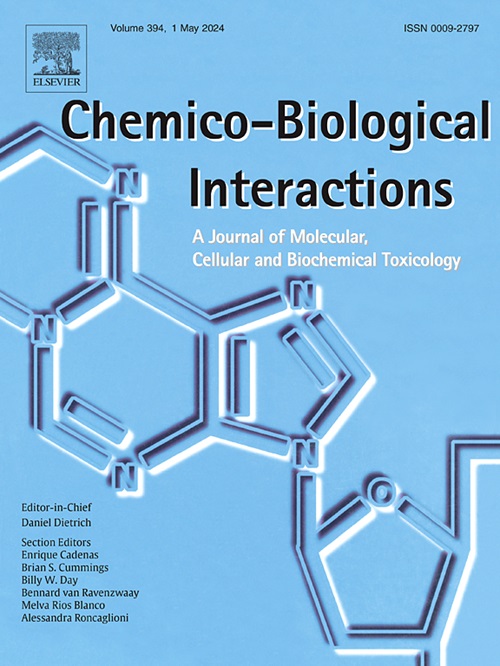Elevated hemoglobin adducts derived from crotonaldehyde in healthy smokers and oral cancer patients by nanoflow liquid chromatography tandem mass spectrometry☆
IF 4.7
2区 医学
Q1 BIOCHEMISTRY & MOLECULAR BIOLOGY
引用次数: 0
Abstract
Hemoglobin adducts derived from reactive chemicals have been used as exposure biomarkers in vivo. We previously identified and quantified adducted peptides derived from acrolein in human hemoglobin after trypsin digestion. In this study, we characterized the Schiff base and Michael adducts of crotonaldehyde in human hemoglobin after NaBH4 reduction to the stable adducts with a respective mass increase of 54.0470 and 72.0575 Da, determined by high-resolution mass spectrometry. We developed a workflow based on nanoflow liquid chromatography nanoelectrospray ionization tandem mass spectrometry to simultaneously quantify 29 adducted peptides derived from acrolein and crotonaldehyde in one drop of blood from smoking oral cavity cancer patients, healthy smokers, and healthy nonsmokers. Levels of ten adducted peptides were significantly elevated in smokers, despite their cancer status, and the adduct levels correlate with the extent of cigarette smoking. Comparing the adduct levels at the same site, the Michael adduct of acrolein is much higher than that of crotonaldehyde. Multivariate analysis by orthogonal partial least squares discriminant analysis suggests that the Michel adducts of acrolein at α-Lys-7, α-His-50, β-Lys-17, and the Schiff base adduct of crotonaldehyde at β-Lys-59 are the predominate contributors. This is the first report on the structural characterization of human hemoglobin adducts of crotonaldehyde and the detection and quantification of these adducts in human subjects. Our results reveal that cigarette smoking plays a major role in forming these adducted peptides which might serve as potential biomarkers for exposure to acrolein and crotonaldehyde.

用纳米流液相色谱串联质谱法分析健康吸烟者和口腔癌患者从巴豆醛中提取的血红蛋白加合物升高。
从反应性化学物质中提取的血红蛋白加合物已被用作体内暴露的生物标志物。我们之前鉴定并定量了胰蛋白酶消化后人血红蛋白中丙烯醛衍生的内合肽。在本研究中,我们通过高分辨率质谱法对人血红蛋白中巴豆醛的Schiff碱和Michael加合物进行了表征,NaBH4还原为稳定加合物后,质量分别增加了54.0470和72.075 Da。我们开发了一种基于纳米流液相色谱纳米电喷雾电离串联质谱的工作流程,以同时定量来自吸烟口腔癌患者、健康吸烟者和健康非吸烟者的一滴血中的29种丙烯醛和巴豆醛衍生的内合肽。吸烟者体内十种内合肽的水平显著升高,尽管他们处于癌症状态,而且这些内合肽的水平与吸烟的程度有关。比较同一部位的Michael加合物水平,丙烯醛的Michael加合物明显高于巴豆醛。正交偏最小二乘判别分析表明,α-Lys-7、α- hys -50、β-Lys-17位丙烯醛的Michel加合物和β-Lys-59位巴豆醛的Schiff碱加合物是主要的影响因子。本文首次报道了巴豆醛的人血红蛋白加合物的结构特征,并对这些加合物进行了检测和定量。我们的研究结果表明,吸烟在形成这些内合肽中起主要作用,这些内合肽可能作为丙烯醛和巴豆醛暴露的潜在生物标志物。
本文章由计算机程序翻译,如有差异,请以英文原文为准。
求助全文
约1分钟内获得全文
求助全文
来源期刊
CiteScore
7.70
自引率
3.90%
发文量
410
审稿时长
36 days
期刊介绍:
Chemico-Biological Interactions publishes research reports and review articles that examine the molecular, cellular, and/or biochemical basis of toxicologically relevant outcomes. Special emphasis is placed on toxicological mechanisms associated with interactions between chemicals and biological systems. Outcomes may include all traditional endpoints caused by synthetic or naturally occurring chemicals, both in vivo and in vitro. Endpoints of interest include, but are not limited to carcinogenesis, mutagenesis, respiratory toxicology, neurotoxicology, reproductive and developmental toxicology, and immunotoxicology.

 求助内容:
求助内容: 应助结果提醒方式:
应助结果提醒方式:


